How a CV Axle Works
#1
Lexus Champion
Thread Starter
I made a short video explaining whatís inside a CV axle and how it works to power your carís wheels:
Here are a few photos of the breakdown.
The CV Axle contains the inner joint, which slides and swings slightly, and the outer joint, which can swing to extreme angles.
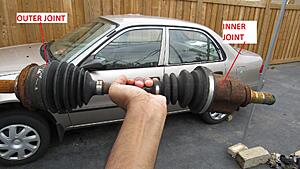
Pop off the boot
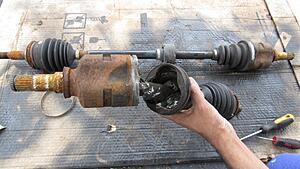
That reveals the needle bearing carrier and rollers
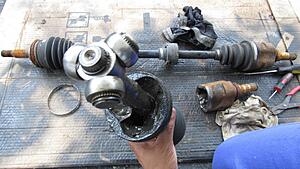
It looks like a fidget spinner
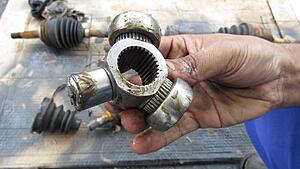
The needles or rollers that make up the bearing
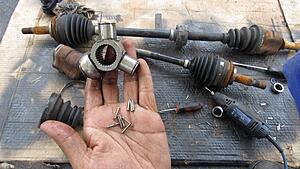
Inside the tripod housing is machined to allow the carrier to move in and out, giving the axle the ability to contract and stretch
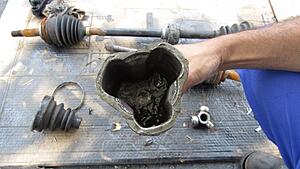
Of course the boot is packed with grease. Note the outer CV joint uses a different grease than the inner
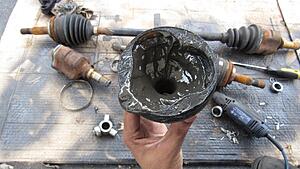
Outer CV joint
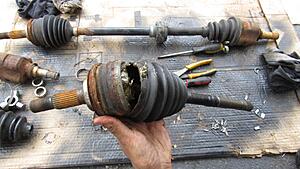
Is made up of an inner race, outer carrier, and the housing with 6 metal ball bearings
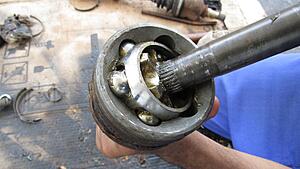
The axle didnít want to pop off the carrier so I cut it off
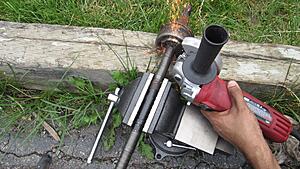
Bearing removed
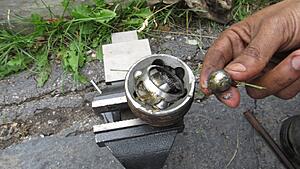
Carrier, inner race, and the 6 ball bearings
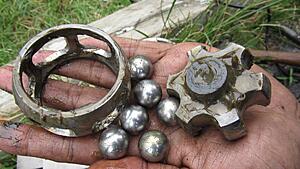
The outer race/ housing of the CV shaft, which connects to the hub
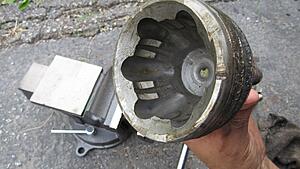
And thatís all the components that go into making the CV shaft work! Enjoy
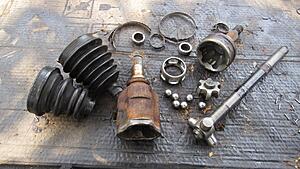
Here are a few photos of the breakdown.
The CV Axle contains the inner joint, which slides and swings slightly, and the outer joint, which can swing to extreme angles.

Pop off the boot

That reveals the needle bearing carrier and rollers

It looks like a fidget spinner

The needles or rollers that make up the bearing

Inside the tripod housing is machined to allow the carrier to move in and out, giving the axle the ability to contract and stretch

Of course the boot is packed with grease. Note the outer CV joint uses a different grease than the inner

Outer CV joint

Is made up of an inner race, outer carrier, and the housing with 6 metal ball bearings

The axle didnít want to pop off the carrier so I cut it off

Bearing removed

Carrier, inner race, and the 6 ball bearings

The outer race/ housing of the CV shaft, which connects to the hub

And thatís all the components that go into making the CV shaft work! Enjoy

#2
Lexus Fanatic
Thanks....nice video. 
The development of adequately-durable CV joints is one thing that held up the introduction of reliable FWD vehicles for decades. Even today, CV joints, and the rubber boots that cover them, are still considered the weak points of a FWD powertrain. The rubber on the boots can crack, tear, or simply dry out and deteriorate with age, allowing the tightly-packed grease inside to gradually booze out. If enough grease is lost through the boot-damage, the joints will prematurely wear out and need to be replaced. More often than not, with many manufacturers, the joint alone cannot be replaced,...it comes in one piece, attached to the half-shaft (half-axle), so you have to buy the entire assembly (or get one in good condition from a junkyard) to make a replacement. That's why it is important to have the rubber boots inspected at regular intervals.....the recommended inspection-period is in the Owners' Manual or Maintenance Schedule.

The development of adequately-durable CV joints is one thing that held up the introduction of reliable FWD vehicles for decades. Even today, CV joints, and the rubber boots that cover them, are still considered the weak points of a FWD powertrain. The rubber on the boots can crack, tear, or simply dry out and deteriorate with age, allowing the tightly-packed grease inside to gradually booze out. If enough grease is lost through the boot-damage, the joints will prematurely wear out and need to be replaced. More often than not, with many manufacturers, the joint alone cannot be replaced,...it comes in one piece, attached to the half-shaft (half-axle), so you have to buy the entire assembly (or get one in good condition from a junkyard) to make a replacement. That's why it is important to have the rubber boots inspected at regular intervals.....the recommended inspection-period is in the Owners' Manual or Maintenance Schedule.
Thread
Thread Starter
Forum
Replies
Last Post
martini3
Car Chat
7
06-28-07 03:37 AM



